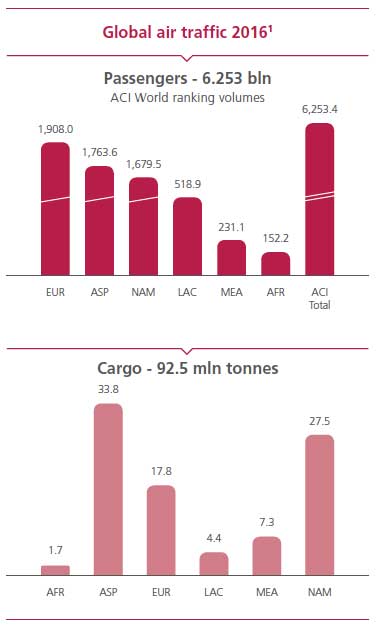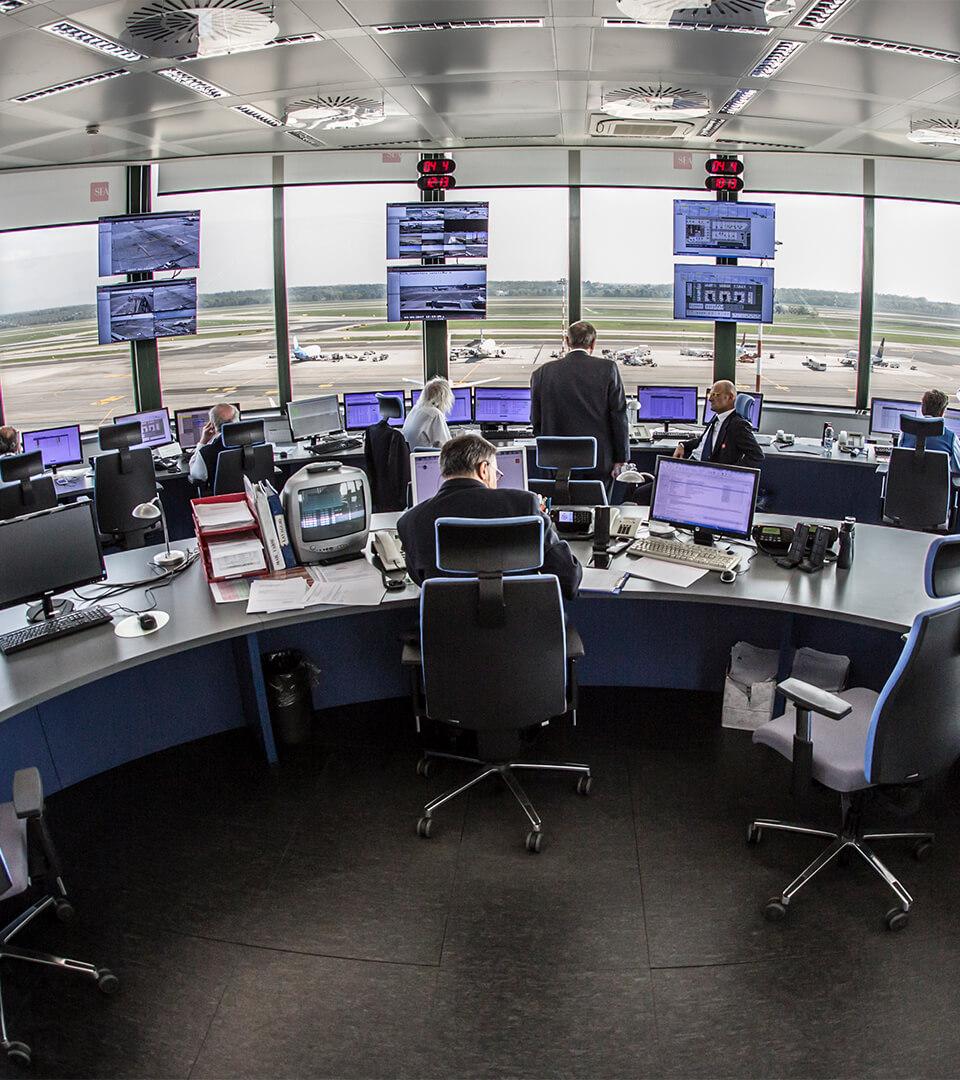The worldwide economic conditions in 2016 improved slightly, even if prospects remain subject to various factors of uncertainty; those of the United States depend on the economic policies of the new administration, not yet defined in detail: an expansive impact, at this time difficult to quantify, may result from interventions announced in terms of budget policy, but unfavourable effects could result from the adoption and dissemination of restrictive trade measures.
Global growth could be hindered by the onset of turbulence in emerging economies associated with the normalisation of American monetary policy.
Consumer inflation has increased slightly in advanced economies, thanks to the attenuation of the price drop in energy products.
According to estimates from the International Monetary Fund (IMF) released in January, the world product increased by 3.1% in 2016; it is expected to increase by 3.4% in 2017 and 3.6% in 2018. The estimates were slightly revised last October in terms of the increase for almost all of the major advanced economies, with the exception of Italy.
In the euro area the growth of GDP continues at a moderate pace but is gradually stabilising, thanks to the boost from the internal demand components. The uncertainty on the world economic trend, partly affected by geopolitical tensions, represents the biggest risk factor for economic activity.
Inflation rose in December, starting to reflect expansive monetary conditions, but is still at low values.
The €-coin indicator prepared by the Bank of Italy, which estimates the underlying dynamics of GDP of the area, recorded a substantial increase in the autumn months, reaching 0.59% in December (from 0.45% in November). According to projections prepared by the Eurosystem central banks released in December, the overall increase in GDP should be 1.7% for 2017 (like in 2016).
Consumer inflation increased to 1.1% (from 0.6%) in December, but practically only due to the acceleration of the prices of fresh food products (2.1% from 0.7%) and energy products (2.6% from -1.1%).
The recovery of the Italian economy, after the acceleration of GDP in the summer quarter, according to available indicators, continued in autumn, although at a pace slightly less than the previous period - sustained by the increase in investments and increase in consumer spending. Forecast indicators are consistent with the continuation of a moderate expansion in economic activity for the first quarter of 2017 as well.
According to preliminary estimates, inflation, as measured by the annual change in the Harmonised Index of Consumer Prices (HICP), rose in December to 0.5% (from 0.1% in November). It is being driven up mainly by the acceleration of fresh food products and air transport services and attenuation of the fall in energy product prices. Inflation stood at -0.1% overall in 2016.
Air transport and airports
Global air transport performance
Global passenger traffic in 2016, based on a sample of 1,091 airports, reported over 5.5% growth on the previous year.
The Middle East recorded the highest growth in percentage terms (+9.4%), followed by Asia (+9%), Europe (+5%) and North America (+3.9%). Only Africa reported decreasing values (-1.9%) compared to 2015.
The cargo traffic also showed increases of more than 3.5 percentage points with 92.5 billion tonnes of handled cargo globally.
Out of a sample of 800 airports, the Middle East area showed the highest growth percentage, with about 6 points more than in 2015 and Asia, which had the largest cargo traffic worldwide with over 34 billion tonnes, and grew by +4.5% compared to 2015.
Malpensa was reconfirmed as one of the main airports in the world ranking 45th for the quantity of cargo handled according to the classification reported by ACI World of the most important airports of the cargo sector (83 airports that transport at least 200 thousand tonnes of cargo).

Legenda: AFR (Africa), ASP (Asia Pacific), EUR (Europa), LAC (America Latina), MEA (Medio Oriente), NAM (Nord America). Fonte: ACI World (Pax Flash & Freight Flash)
European airport performances - 2016 (2)
In the course of 2016, passenger traffic at the major European airports showed an overall increase of 5.6% with more than one billion passengers served. Hub airports witnessed a 3.5% growth; among these was the growth of Amsterdam (+9.2%) and Madrid (+7.7%). Other airports that stand out based on the dimensions of served passenger traffic include Barcelona (+11.2%), London Gatwick (+7.1%) and Paris Orly (+5.3%).
Cargo traffic reported an increase of 3.4% with a total of more than 11 million tonnes of cargo processed.
Among the main airports in terms of processed cargo, Frankfurt ranks first with more than 2 million tonnes, followed by Paris Charles de Gaulle with 1.9 million, Amsterdam with 1.7 million and London Heathrow with 1.5 million. Malpensa airport continues to rank fifth in terms of volumes of handled cargo (536.9 thousand tonnes) and is the second airport in terms of growth percentage (+7.4%) after Madrid airport (+9.1%).
2016 Italian airport traffic performance (3)
The performance of the 36 Italian airports that are members of Assaeroporti reported a positive trend compared to 2015 (+4.6%) for a total of 164.7 million passengers served. Aircraft movements also continued to increase reporting a rise of 2.6% for a total of 1.5 million. The top five airports in terms of number of passengers travelling were Rome Fiumicino, Malpensa, Bergamo, Linate and Venice.
The Rome airport system recorded more than 47 million passengers in transit while in Lombardy the 40 million passengers served were distributed at the Milan airports with more than 29 million and at the Orio al Serio airport with around 11.2 million. The north-east system composed of Venice and Treviso reported around 12.3 million passengers while the Pisa and Florence airports approximately 7.5 million. Apulia airports (including Bari, Brindisi, Foggia and Taranto) saw more than 6.6 in transit, in Sicily (Catania, Comiso, Lampedusa, Palermo and Trapani) around 14 million passengers while is Sardinia (Alghero, Cagliari and Olbia) 7.5 million passengers.
(1) Source: ACI World (Pax Flash & Freight Flash)
(2) Source ACI Europe
(3) Source Assaeroporti (commercial aviation + general aviation)
